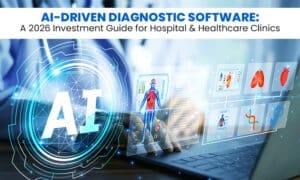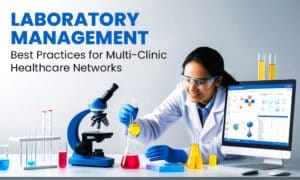
In today’s healthcare landscape, hospital management software has become essential for streamlining operations, improving patient care, and managing resources efficiently. Recent statistics show that over 90% of hospitals worldwide have implemented a digital management system, yet nearly 40% report significant integration challenges that prevent them from realising the full benefits of their technology investments. These difficulties range from connecting legacy systems with newer platforms to ensuring proper data flow between departments. As healthcare facilities continue to digitise their operations, the complexity of integrating various software components has emerged as a major hurdle. Healthcare administrators often find themselves navigating a maze of technical problems, compatibility issues, and resistance to change. This article explores the most common integration challenges faced when implementing hospital information systems and provides practical solutions to overcome them. By addressing these obstacles head-on, healthcare facilities can improve operational efficiency, enhance patient care quality, and create a more seamless experience for both staff and patients.
Incompatibility Between Legacy Systems and New Software
One of the most persistent challenges in healthcare software integration is bridging the gap between legacy systems and modern hospital management platforms. Many healthcare facilities have invested heavily in older systems that still contain vital patient data and operational information. According to recent surveys, approximately 65% of hospitals are still using at least one legacy system that’s more than 10 years old.
When integrating new hospital management software, compatibility issues often arise because legacy systems were typically built with outdated programming languages and architectures that don’t easily connect with modern APIs and cloud-based solutions. These older systems may lack proper documentation, making it difficult to understand how they store and process data. Additionally, the original developers might no longer be available to provide guidance, leaving IT teams to reverse-engineer solutions.
Data Standardisation and Quality Issues
- In hospital management software, consistent data formats are essential for smooth integration.
- Healthcare facilities handle large volumes of data, patient records, lab results, billing, and more.
- Healthcare data is growing rapidly at 48% annually, making standardisation both important and challenging.
Data standardisation problems arise in various ways:
- Departments may use different formats for the same data (e.g., DD/MM/YYYY vs MM/DD/YYYY).
- Medical terms may vary—some systems use codes; others use abbreviations or informal terms.
- Inconsistent data leads to poor EHR communication, creating silos and patient safety risks.
To tackle these issues, hospitals should:
- Use international standards like HL7, DICOM, or FHIR for structured data exchange.
- Establish clear data governance policies for consistent entry and management.
- Begin integration with a data cleansing phase to review and standardise existing data.
- Conduct regular data quality audits to maintain consistency over time.
- Use automated tools from some software providers to detect and fix standardisation problems during integration.
Security and Privacy Concerns
As hospital management systems become more interconnected, security and privacy concerns intensify. Healthcare data is among the most valuable information on black markets, fetching up to £250 per record, making hospitals prime targets for cyberattacks. During integration projects, security vulnerabilities may emerge as systems are temporarily opened for data migration or new connections are established.
The complexity of maintaining security during integration is compounded by varying security architectures across different systems. Older software might lack modern encryption capabilities, while newer systems may have stringent security requirements that are difficult to implement across the entire network. Additionally, regulatory requirements like GDPR in Europe or HIPAA in the US create legal obligations for data protection that must be addressed during integration.
Security And Privacy in Hospital System Integration
| Aspect | Stat/Fact | Details / Actions Taken |
| Value of healthcare data | Up to £250 per patient record | Highly sought after on black markets, making hospitals prime cyberattack targets. |
| Security risk during integration | High | Systems are temporarily opened, increasing exposure during data migration or establishing new connections. |
| Software inconsistency | Varies by system age | Older systems may lack encryption; newer ones may have stricter, harder-to-implement security protocols. |
| Regulatory obligations | GDPR (EU), HIPAA (US) | Hospitals must meet legal data protection standards during and after integration. |
| Pre-integration assessments | Widely adopted best practice | Identify system vulnerabilities and plan mitigation strategies in advance. |
| Encryption methods | End-to-end encryption | Minimises data exposure risks during system communication and migration. |
| Access control | Role-based access | Limits sensitive data access to only authorised users across the integrated system. |
| Dedicated security oversight | Increasingly common | Appoint a security officer to monitor integration and ensure compliance. |
| Ongoing testing | Regularly performed | Identifies new vulnerabilities post-integration before they are exploited. |
| Secure integration platforms | Used by many hospitals | Designed specifically for healthcare, these platforms simplify compliance and boost data protection. |
Staff Training and Resistance to Change
Even the most technically perfect hospital management software integration can fail if the human element is neglected. Research indicates that approximately 70% of digital transformation projects in healthcare face resistance from staff members. This resistance often stems from unfamiliarity with new systems, fear of increased workload during transition periods, or concerns about job security.
Healthcare professionals typically have limited time to learn new systems while maintaining their primary responsibility—patient care. Training sessions may be rushed or insufficient, leading to frustration and reluctance to fully adopt the new integrated system. Additionally, if staff members don’t understand the benefits of integration, they may revert to familiar workarounds rather than using the new medical software as intended.
Interoperability Between Different Vendors’ Systems
- Modern healthcare facilities often use software from multiple vendors, each tailored to specific departments or functions.
- A survey shows hospitals typically rely on systems from at least 16 different vendors.
- This diversity creates major interoperability challenges when trying to connect all systems seamlessly.
- Issues arise because vendors may:
- Use proprietary data formats
- Have unique identification systems
- Operate with different communication protocols
- Example: Radiology software might not sync with the hospital’s main EMR.
- Lab systems may struggle to connect with patient management tools.
- These gaps cause inefficiencies, raise error risks, and impact patient care when data isn’t accessible in real time.
- To address this, forward-thinking hospitals:
- Choose software that supports open standards like HL7 FHIR.
- Use integration platforms or enterprise service buses (ESBs) to centralise system connections.
- Avoid multiple point-to-point interfaces with a unified integration strategy.
- Evaluate vendors on their ability to integrate with other systems.
- Build collaborative partnerships with vendors to solve interoperability issues together.
Resource Constraints and Budget Limitations
Implementing integrated hospital management software requires significant resources—both financial and human. A comprehensive hospital system integration can cost between £500,000 and £10 million depending on the facility’s size and complexity. Many healthcare organisations struggle to allocate sufficient budget for all aspects of integration, from initial implementation to ongoing maintenance and updates.
Hospitals have found several approaches to address resource limitations effectively. Developing a phased implementation plan spreads costs over time while allowing the organisation to learn from early integration stages before proceeding to more complex components. Cloud-based healthcare management systems often require lower initial investment than on-premises solutions, making them attractive for budget-conscious facilities. Partnering with experienced integration specialists who understand healthcare workflows can reduce the burden on internal IT staff and avoid costly mistakes. Some hospitals have formed consortia to share the costs of integration platforms and expertise, particularly when they use similar systems. Calculating and demonstrating return on investment for integration projects, through metrics like reduced duplicate testing, decreased medication errors, or improved billing accuracy, can help secure adequate funding by showing the tangible benefits of properly resourced integration efforts.
Conclusion
Integrating hospital management software presents numerous challenges, but these obstacles can be overcome with proper planning, adequate resources, and attention to both technical and human factors. As healthcare continues to digitise, the benefits of well-integrated systems—improved patient care, operational efficiency, and data-driven decision making—make addressing these integration challenges worthwhile.
By focusing on compatibility solutions, data standardisation, security measures, comprehensive training, interoperability standards, and realistic resource allocation, healthcare facilities can navigate the complex integration landscape successfully. The most effective approach combines technical solutions with organisational strategies that acknowledge and address the human aspects of technology adoption.
Remember that integration is not a one-time project but an ongoing process as new technologies emerge and healthcare needs evolve. Establishing governance structures and maintenance protocols for your integrated healthcare information system ensures sustained benefits long after the initial implementation. With thoughtful planning and execution, hospitals can overcome common integration challenges and create a cohesive digital ecosystem that supports their mission of providing excellent patient care.
Sources-
Digital Transformation in Healthcare: Technology Acceptance and Its Applications – PMC





